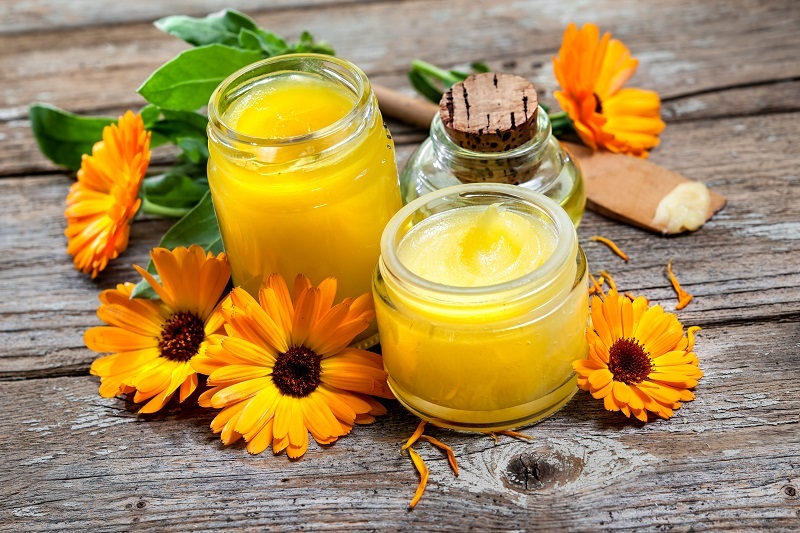Sunflowers Decoded: 8 Extraordinary Facts You've Never Encountered
Posted on 01/07/2025

Sunflowers Decoded: 8 Extraordinary Facts You've Never Encountered
Sunflowers (Helianthus annuus) are iconic and instantly recognizable for their golden petals and tall stalks. However, beyond their sun-kissed beauty lies a realm of fascinating scientific phenomena, unique historical connections, and little-known facts. This article delves deep into the hidden wonders of sunflowers, decoding their mysteries through eight extraordinary facts that will amaze even the most ardent nature lovers.
1. Sunflowers Track the Sun Using Heliotropism - But Only When Young!
Heliotropism refers to the motion of plants as they move toward the sun. Sunflowers are famous for their apparent habit of following the sun's arc through the sky each day. But here's a twist: this behavior, known as solar tracking, occurs primarily while sunflowers are in their bud and early growth stages.
- Young sunflowers track the sun from east to west during the day.
- At night, the heads return east to prepare for sunrise.
- Mature sunflowers stop tracking; their heads settle facing east permanently for maximum pollination benefits.
Recent scientific studies reveal that facing east helps increase morning warmth, making them more attractive to pollinators. This sun-facing adaptation gives sunflowers a botanical edge among competing blossoms.
2. The Fibonacci Sequence is Encoded in Every Bloom
If you closely examine the pattern of sunflower seeds, you'll spot a mathematical marvel. The arrangement of seeds in a sunflower head follows the famous Fibonacci sequence--1, 1, 2, 3, 5, 8, 13, and so on--where each number is the sum of the previous two.
- Sunflower heads feature spirals arranged in counterclockwise and clockwise directions.
- The number of spirals typically matches consecutive Fibonacci numbers--like 34 and 55 or 55 and 89.
- This mathematical optimization allows maximum packing of seeds in the available space, demonstrating nature's efficiency.
Such a design ensures robustness and productivity, giving rise to the sunflower's signature geometric harmony and maximizing its genetic legacy.
3. Sunflowers to the Rescue: Weapons Against Radiation
Did you know sunflowers are more than just pretty faces in a field? They are powerful phytoremediators, meaning they can clean contaminated soil and water by absorbing heavy metals and toxic elements through their roots.
- After the Chernobyl and Fukushima nuclear disasters, sunflowers were planted to help remove radioactive cesium and strontium from the soil.
- Sunflowers have been utilized in cleaning up lead and arsenic from polluted environments globally.
- Phytoremediation by sunflowers is regarded as an eco-friendly, cost-effective alternative to traditional decontamination techniques.
This extraordinary ability makes sunflowers a symbol of hope and resilience, playing a critical role in environmental stewardship and healing landscapes blighted by industrial and nuclear disasters.
4. Giant Sunflower Records: Tallest, Heaviest, and Widest
Sunflower enthusiasts and gardeners often compete to grow the biggest plants and flowers. The records set by these towering giants are truly remarkable:
- The tallest sunflower ever grown reached a mind-boggling height of 30 feet, 1 inch in Germany (2014).
- The world's largest sunflower head spanned an incredible 32.25 inches across.
- One of the heaviest sunflower heads weighed over six kilograms (over 13 lbs)!
These feats are a testament to robust sunflower genetics and dedicated cultivation techniques, making the sunflower a favorite among record-chasers and gardening aficionados alike.
5. Sunflowers as Living Compasses: Navigating with Nature
Throughout history, travelers and farmers have noted that fields of sunflowers can serve as natural compasses. Due to their east-facing orientation after blooming, experienced wayfarers can quickly determine cardinal directions simply by observing the alignment of mature sunflower heads.
- This unique trait has been harnessed since ancient times across Eurasia and North America.
- Sunflower orientation is particularly useful in open fields or remote rural landscapes where man-made reference points are scarce.
- The east-facing tendency enhances early-morning warmth and pollination, further embedding the 'sun compass' within the sunflower's evolutionary toolkit.
So, when you're lost in a wild field, let the sunflower guide you!
6. Sunflowers: From Ancient Healings to Culinary Delights
Sunflowers have been utilized by civilizations for thousands of years, with archaeological evidence placing their domestication as early as 3000 BC by Native American tribes. Far more than ornamental, every part of the sunflower was (and still is) put to use:
- Sunflower seeds were ground into flour or consumed as hearty snacks.
- The oil extracted remains a staple for cooking and cosmetics due to its light texture and healthful properties.
- Pigments from petals dyed textiles and pottery made from hollow stalks, while leaves and roots featured in traditional remedies.
- Medicinal applications included wound dressings, relief from respiratory ailments, and anti-inflammatory balms.
Today, sunflower products such as seeds, oil, and extracts are integral to health food markets, beauty brands, and gourmet kitchens, testifying to the plant's timeless value.
7. Sunflowers Have Their Own Language: Steganography in Flowers
You've certainly heard about the "language of flowers," but sunflowers have a secret code of their own, extending even to art and espionage. In the Victorian era, sunflowers symbolized adoration, loyalty, and longevity.
- Secret messages were conveyed through the gifting of sunflowers, signifying unwavering loyalty or devotion.
- Sunflowers featured in clandestine codes during wars, where their position or number in bouquets signaled messages known only to the recipients.
- Artists like Vincent van Gogh elevated sunflowers into icons of illumination, friendship, and hidden emotion, challenging viewers to crack their coded significance.
Today, the sunflower remains a powerful cultural symbol: a sign of hope, freedom, and courage--from protest movements to peace rallies across the globe.
8. Wildlife Wonders: Sunflowers as Ecosystem Hubs
The ecological importance of sunflowers extends far beyond their economic and aesthetic value. Their blooms support an astonishing diversity of species:
- Sunflowers are nectar-rich pollinator magnets, feeding bees, butterflies, and beneficial insects throughout the growing season.
- Birds, such as goldfinches and sparrows, flock to sunflower fields for oily, protein-rich seeds.
- Even small mammals, including rodents and deer, rely on sunflowers as a foraging staple.
Sunflower fields foster robust food webs and serve as essential refuges for multiple species, reinforcing their ecological importance and making them a gardener's ally in boosting biodiversity.

Optimizing Your Understanding: The Ongoing Legacy of Sunflowers
From their mathematical sunflower geometry to their meaningful roles in culture, cuisine, and ecological stewardship, sunflowers remain one of nature's most extraordinary achievements. These sunflower facts reveal a plant rich in history and utility, brimming with surprises beyond its sunshine-hued face.
- Grow sunflowers to enhance your soil and promote pollinator health.
- Admire their natural patterns as windows into universal laws of efficiency and order.
- Honor the hidden language of sunflowers: symbols of hope and resilience for generations.
- Select from dozens of spectacular cultivars, from towering giants to ornamental varieties, to suit any garden or landscape vision.
Unraveling the secrets of sunflowers offers a deeper connection to the mysteries of nature, and with every season, these golden blooms continue to inspire, heal, and awe us all.
Frequently Asked Questions about Sunflowers
- What makes sunflowers unique among plants?
Their sun-tracking behavior, mathematical symmetry, and diverse environmental benefits set them apart from most other flora. - Can sunflower seeds be eaten raw?
Yes, sunflower seeds are nutritious and safe to eat raw, though roasting brings out their flavor and increases digestibility. - How do sunflowers help the environment?
From phytoremediation and pollinator support to soil improvement, their impact is multifaceted and crucial for sustainable agriculture. - Are all sunflower species the same?
No, there are over 70 distinct species within the Helianthus genus, each adapted to diverse climates and uses.
Let the sunflower inspire your curiosity--there's always more to decode in the world's most radiant flower!





